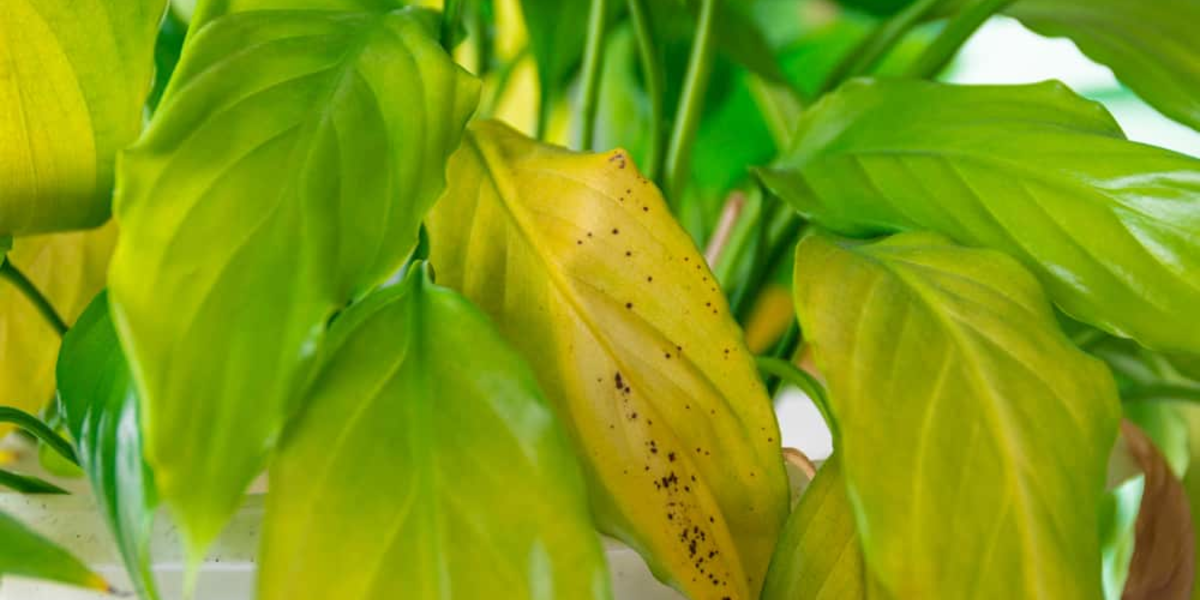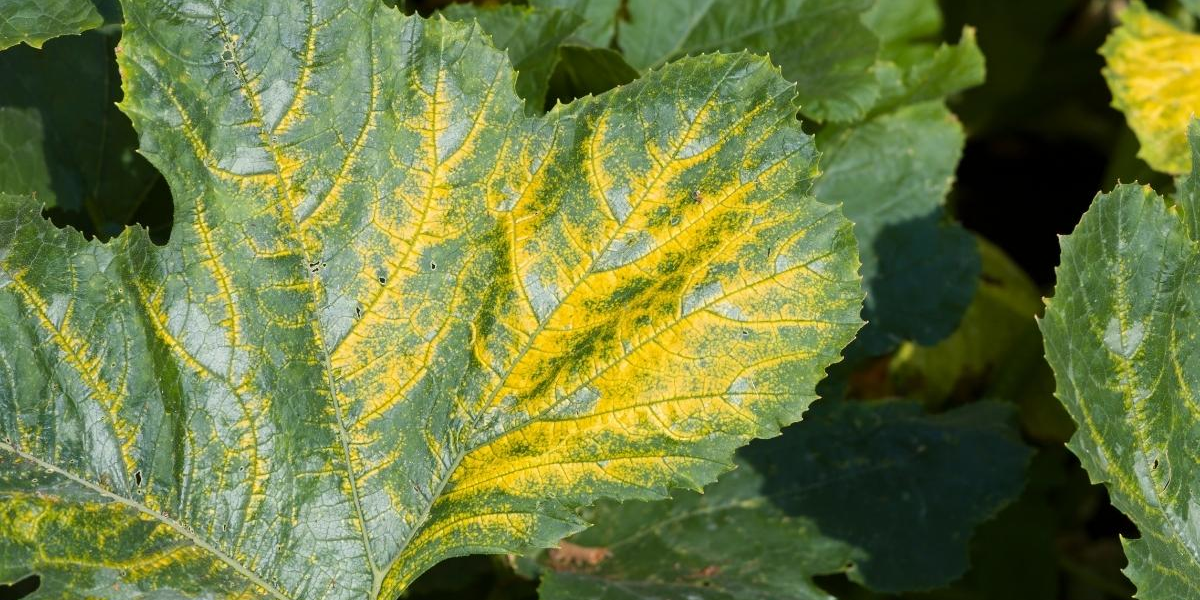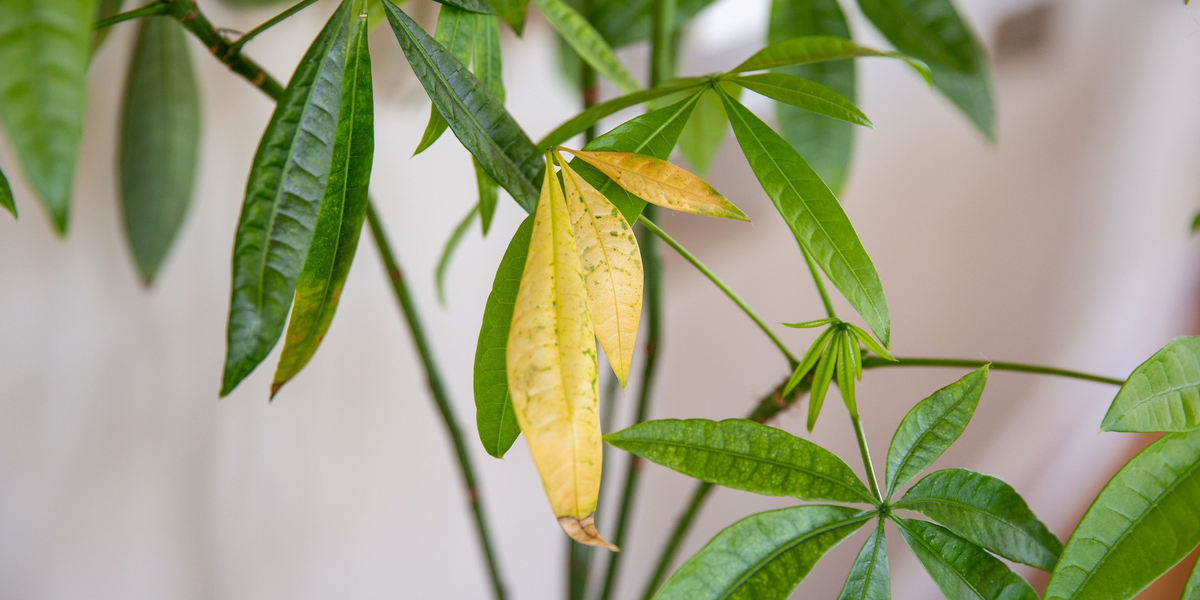Each type of indoor plant requires an individual approach. It means different watering regimes, lighting, humidity, room temperature, soil quality, etc. Violation of one or more of these points can lead to the fact that plants begin to feel bad. If they are in unsuitable conditions for a long time, there is a risk of developing severe diseases.
Houseplants can signal that they are not feeling well in different ways. The most common symptom is the yellowing of the foliage. Many beginner gardeners think that this is due to insufficient irrigation. However, the problem can be much more complicated, so judging the disease only by the yellow leaf plant is not entirely correct. In this article, we will share our knowledge of what color changes can be associated with and how to restore the health of a damaged flower.
Yellow Leaf Plant: Problem Overview
Indoor plants can be of different shades, with and without colored veins, but, as a rule, most often, the vegetation retains a green color of various hues. If usually green leaves turn yellow, it is a signal that something is wrong with the plant. And you can find a yellow leaf on orchid, roses, succulents, camellias, and many other flowers.

Color changes are because the content of chlorophyll, which is responsible for the green tint, decreases in affected parts. The reasons why this pigment gradually disappears can be very different, and you have to figure it out to save your yellow leaf plant. In some cases, it simply ruins the appearance of the flower somewhat; in others, it may indicate dangerous diseases that will not only kill the plant but also move to other pots. Among the most common yellow leaf causes are the following:
- Improper watering. Both lack of moisture and its excess can provoke the yellowing of plants. It is because oxygen exchange and the exchange of nutrients between the roots and the upper part are disturbed. Although at first glance, over- and underwatering have a completely different focus, they give the same result — the health of plants is deteriorating.
- Sudden temperature changes. Changes in ambient temperature are major stress for plants. They may react to it in different ways, including yellowing. Pay attention to the place where the pot is. Perhaps a draft is blowing on it from a window, an air conditioner, or a fan, which leads to hypothermia. Or it’s standing next to a battery or heater, which can cause overheating. Together with the wrong watering regimen, all this can lead to tragic consequences for the plant’s health.
- Incorrect lighting. The situation is very similar to watering. Both excess and lack of light affect the flower’s condition. Each species has unique lighting needs. Before buying, it is vital to find out which side is better to place them on, whether they are tolerant of direct light, or better to put them in a darkened area, and much more.
- Unbalanced feeding. Incorrectly selected fertilizer or a complete lack of it can also lead to yellowing of the leaves. Nutrient deficiencies manifest themselves in many ways and are usually accompanied by other symptoms that allow you to understand what your plant is missing.
- Incorrect soil acidity. When this indicator is violated, some useful elements are no longer absorbed by the roots in the right amount, which leads to the development of yellow leaf plants.
- Diseases. Most serious viral, bacterial, and other plant diseases are associated with improper conditions. If you overwater the flower, it provokes the development of root or stem rot, which damages the roots, interferes with the average growth of the upper part, and triggers yellowing of leaves.
- Pests. Insects appear in pots, too, due to improper watering or temperature conditions. They suck the juices of plants and gnaw on leaves and stems, which causes them to change color and gradually die off.
- Aging. As surprising as it may sound, plants also age. Some types tend to shed old leaves, so they do not take food from young shoots. If you do not see other visible causes of yellowness, it is probably due to natural processes.

Yellow leaf on roses, orchids, money trees, and many other plants indicates a violation of natural internal processes. It is likely that your flowers do not receive proper nutrition and suffer from it. It is important to find and classify the root cause on time and get rid of it to help your flowers return to normal faster.
Yellow Leaf Disease Symptoms and Diagnosis
Each yellow leaf cause described above has several supporting symptoms that can be helpful in identifying specific diseases or improper care practices:
- Lack of moisture. The tips of the yellow leaf camellia are starting to dry out; the entire leaf dies gradually. Plants with small foliage like Ficus Benjamin shed affected parts fairly quickly. In representatives of the Amaranth family, the leaves are twisted into a tube along the central vein. Stems become thinner and stiffer. Over time, a dehydrated yellow leaf plant dies.
- Excess moisture. Excessive watering leads to rotting processes in different parts of the flowers. The root system becomes brittle, slippery to the touch, and begins to stink. The upper part acquires a yellowish tint. In succulents, excess moisture is manifested in the leaves becoming soft, easily breaking off from the branches, and the trunk not holding its shape well. In a neglected state, root or stem rot infects most of the plant, causing it to die.
- Temperature fluctuations. Both cold and heat lead to the fact that the flowers turn yellow and pale. However, in winter, at low temperatures, the risk of “catching” concomitant diseases, such as rot, is especially high due to overwatering. In such cases, you need to look for the symptoms of this disease.
- Lack of light. Because of it, the leaves turn yellow, pale, and fall off; the shoots become thinner and seem to stretch upwards. If it is a flowering species, it ceases to produce buds in the absence of sufficient lighting. That is, the yellow leaf plant does not develop evenly.
- Too much light. Diffused bright light generally does not harm most species. However, direct sunlight or placing the lamp too close may cause burns. Usually, they are not accompanied by additional symptoms, but yellow and black spots significantly spoil the overall look.
- Unbalanced diet. Some species are particularly sensitive to it; for example, you often see yellow leaf geranium and other “tender” plants for this reason:
Lack of nitrogen: the leaves decrease in size and turn yellow. Lack of iron or molybdenum: the veins on the leaves turn yellow. Lack of magnesium: yellow spots appear on the plants. Lack of calcium: only the tips of the leaves turn yellow. Lack of manganese: the leaves become yellowish-gray. An excess of nutrients: the appearance of yellowness and the rapid withering of the whole plant.
- Incorrect soil acidity. Ideally, this value should range between 4.5 to 6.0 pH (for acid-loving plants) or stay neutral at 7.0 pH (for all other species). Since acid imbalance interferes with the absorption of beneficial elements, you need to look for symptoms characteristic of an unbalanced diet and measure the acid level with a device.
- Diseases. Fungal and bacterial diseases mainly appear due to high soil moisture. You can find the fungus on the ground top layer, on the underside of leaves, and at the junctions of branches. Fungi and bacteria cover young shoots especially abundant. They look like a white, beige, or yellowish coating, which over time covers an increasing area. In this case, as a rule, an unpleasant smell emanates from the soil.
- Pests. Most often, you will see mites, whiteflies, scales, mealybugs, and aphids on houseplants. Although they are all tiny creatures, they multiply quickly, making them noticeable. Also, you will definitely pay attention to such traces of their vital activity as cobwebs, honeydew, bite marks on leaves, and much more. Plants due to pests lose their vitality, begin to wither, turn yellow, and wrinkle.
The last two points are the most important and dangerous for your garden. The fact is that they can destroy the yellow leaf plant in a short time and infect all nearby pots. A lot of effort will have to be made to interrupt the disease cycle and stop the epidemic. Therefore, these causes need to be detected at an early stage.

Because you need to analyze multiple symptoms simultaneously, identifying the root cause by considering all the factors can be tricky. Your best bet is to ask the AI for help and use an app to help you discover the problem:
- Prepare a yellowed flower. Since signs of disease may be underground, remove the plant from the pot and clean the roots from the soil (do it carefully so as not to damage them).
- Take several pictures of the whole plant and its damaged parts in a well-lit area. You can also upload media files from your library to the app.
- The system will analyze photos of the plant and suggest several possible diseases with similar symptoms. The first option on the list is the most likely.
Use this app to identify the cause of your flower’s poor health and find the best cure for yellow leaf issues.
Yellow Leaf Plant Treatment
Now that you understand why the leaves on your plants turn yellow, you can begin to find the proper care approach for it:
- Rotting due to excessive watering. In the early stages, simply letting the soil dry is sufficient. In a neglected state, when stem or root rot has developed, you need to remove the yellow leaf plant from the pot, shake it off the ground, cut off all damaged parts, disinfect the cuts to stop the transmission of infection to healthy parts, and repot the flower into fresh soil. Provide good drainage so that the water does not stagnate.
- Dehydration. Get rid of dried and yellow leaves, so they do not take nutrition from healthy parts. Provide the correct watering regime and a sufficiently high level of humidity. Always consider the unique properties of each species. For example, to prevent the appearance of yellow leaf hydrangea, you need to keep the ground slightly moist all the time. If this flower grows outdoors, you can use a mulch to retain moisture.
- Burns. Most species prefer diffused light, so move the pot to a more suitable location, away from direct sunlight. Unfortunately, it will not help eliminate burn spots, but it will save the yellow leaf plant from death.
- Hypothermia. Find a place for a damaged flower away from active air currents. You can wrap it in a blanket and put it on a wooden stand. Keep affected plants away from windows.
- Lack of fertilizer. Depending on which elements are missing, you should choose plant food. The season and stage of development should also be taken into account. Opt for ready-made solutions, as natural remedies are ineffective for treatment. If the soil in which your flower grows is old, it may have already given up all its useful substances and should be replaced.
- Diseases. Almost all of them result from improper watering, high humidity, and low temperature. Therefore, first of all, you need to take care to create an ideal environment for a diseased plant. Also, be sure to quarantine it so it doesn’t infect other flowers. A fungicide should be used against bacteria and fungi, which is applied to all parts, including the roots. If most of the plant is affected by the disease, it is best to throw it out.
- Pests. You can fight insects both with ready-made store-bought solutions and prepare DIY natural treatments from insecticidal oils (neem oil), soaps, and diatomaceous earth. You should also establish the correct irrigation regime suitable for a particular species. Pest control is a complex and lengthy process; you should continue plant treatment until all insects have disappeared. In this case, as with other diseases, it is better to isolate the yellow leaf plant from others for the entire period.
Many problems with houseplants are due to improper conditions. Therefore, it is best to prevent yellow leaf plant diseases by adhering to the correct irrigation system and keeping flower pots in ideal conditions. Healthy plants are resistant to most diseases and pests.
Leave a Reply
You must be logged in to post a comment.